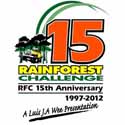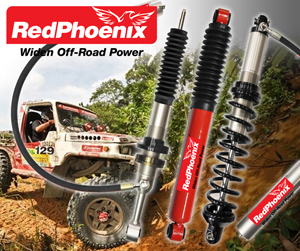60 YEARS OF LAND ROVER
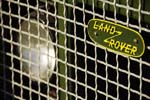 Sixty years ago, farmers used horses to work the land and utility vehicles were used by the military. Then in 1948 a plucky litle car was invetned that changed all that. The Land Rover.
Sixty years ago, farmers used horses to work the land and utility vehicles were used by the military. Then in 1948 a plucky litle car was invetned that changed all that. The Land Rover.
 Over the last 60 years, the Land Rover range of vehicles has evolved to become a byword for toughness, durability, comfort and elegant style. Year by year, Land Rover models have redefined the world´s 4×4 categories. Also the Land Rover has been regarded as an ideal frame for conversions of every kind. From rail vehicles to specialist safari cars and military transportation to emergency vehicles, Land Rovers have risen to every demand.
Over the last 60 years, the Land Rover range of vehicles has evolved to become a byword for toughness, durability, comfort and elegant style. Year by year, Land Rover models have redefined the world´s 4×4 categories. Also the Land Rover has been regarded as an ideal frame for conversions of every kind. From rail vehicles to specialist safari cars and military transportation to emergency vehicles, Land Rovers have risen to every demand.
 The first Land Rover appeared in 1948 – a brilliantly simple and inventive working vehicle. Brothers Spencer and Maurice Wilks, Land Rover´s creators working from the new plant at Solihull, developed an iconic vehicle that combined utilitarian simplicity with rugged, dependable quality. Wilks brothers put their minds to the problem of coming up with a vehicle which would be simple in design, cheap to build, require minimal tooling and preferably would
The first Land Rover appeared in 1948 – a brilliantly simple and inventive working vehicle. Brothers Spencer and Maurice Wilks, Land Rover´s creators working from the new plant at Solihull, developed an iconic vehicle that combined utilitarian simplicity with rugged, dependable quality. Wilks brothers put their minds to the problem of coming up with a vehicle which would be simple in design, cheap to build, require minimal tooling and preferably would  use as little sheet steel as possible. Maurice owned a 250-acre estate running down to the sea on the island of Anglesey, just off the North Wales coast. As Maurice liked to get involved in his farm as much as possible, he needed a versatile vehicle which could double as both a light tractor and road transport. At one stage, an ex-army Willys Jeep was brought into play to partly fulfil this role. The story goes that, when asked by his brother what he would replace the Jeep with when it wore out, Maurice admitted he had no idea – there just wasn’t anything else he could buy. It was promptly decided that they should design their own replacement. Work on the prototype began in earnest in the spring of 1947, and by summer it was finished.
use as little sheet steel as possible. Maurice owned a 250-acre estate running down to the sea on the island of Anglesey, just off the North Wales coast. As Maurice liked to get involved in his farm as much as possible, he needed a versatile vehicle which could double as both a light tractor and road transport. At one stage, an ex-army Willys Jeep was brought into play to partly fulfil this role. The story goes that, when asked by his brother what he would replace the Jeep with when it wore out, Maurice admitted he had no idea – there just wasn’t anything else he could buy. It was promptly decided that they should design their own replacement. Work on the prototype began in earnest in the spring of 1947, and by summer it was finished. 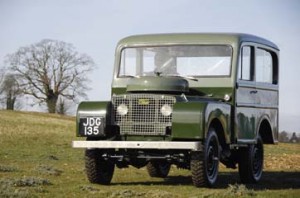 Not surprisingly, the new vehicle bore some resemblance to the Jeep, but it would be unjust to dismiss it as a copy; the Rover engineers were far too thorough to simply copy a design, for good or for bad. The center steering was still a testimony to the agricultural tractors and was intended to eliminate the need to produce left- and right-hand steering vehicles for different markets. The engine in the prototype was a stop-gap pre-war 1,389cc Rover 10 four-cylinder, but it was obvious that this engine, which could barely muster 40hp, was not up to the task. Therefore the engine chosen for
Not surprisingly, the new vehicle bore some resemblance to the Jeep, but it would be unjust to dismiss it as a copy; the Rover engineers were far too thorough to simply copy a design, for good or for bad. The center steering was still a testimony to the agricultural tractors and was intended to eliminate the need to produce left- and right-hand steering vehicles for different markets. The engine in the prototype was a stop-gap pre-war 1,389cc Rover 10 four-cylinder, but it was obvious that this engine, which could barely muster 40hp, was not up to the task. Therefore the engine chosen for 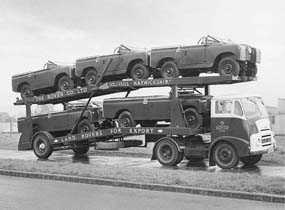 the production Land Rover was a version of that developed for the new Rover P3 60 saloon (due for launch in 1948) and was a fairly conventional 1,595cc four-cylinder sloping-head petrol engine with overhead inlet and side exhaust valves, producing 50hp at 4,000rpm.
the production Land Rover was a version of that developed for the new Rover P3 60 saloon (due for launch in 1948) and was a fairly conventional 1,595cc four-cylinder sloping-head petrol engine with overhead inlet and side exhaust valves, producing 50hp at 4,000rpm.
In 1950, the free-wheel was discontinued (the transmission now becoming optional four-wheel drive or rear-wheel drive, selection being by means of a lever adjacent to the gear lever) while two years later the engine capacity was increased to 1,997cc.
By the mid 1950s, the Land Rover name had been firmly established as a watchword for durability and off-road excellence. Military and agricultural users, as well as sectors such as recovery and emergency services, all found in Land Rover the qualities they valued in a vehicle. The series I got named when the Series II came out in 1958. The Series I came in several varieties: 80″ wheelbase (1948-1953), 86″ (1953-1956), 88″ (1956-1958), 107″ (1953-1958) and 109″ (1956-1958). Engines were the 1595cc (1948-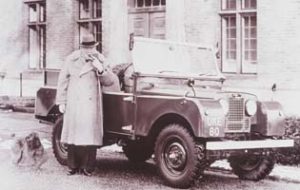 1951), 1997cc (1951-1958) petrol and the 2052cc diesel (1957-1958). The Series II were short-lived models but they set the style for Land Rover for nearly 3 decades. Introduced in 1958 they were designed by David Bache, Rover’s car stylist. The available wheelbases were 88 and 109″, the engines were the 2052cc diesel or the 2286cc petrol, the early 88″ came with the 1997 petrol.
1951), 1997cc (1951-1958) petrol and the 2052cc diesel (1957-1958). The Series II were short-lived models but they set the style for Land Rover for nearly 3 decades. Introduced in 1958 they were designed by David Bache, Rover’s car stylist. The available wheelbases were 88 and 109″, the engines were the 2052cc diesel or the 2286cc petrol, the early 88″ came with the 1997 petrol.
With continued growth in the mainstream four-wheel drive market in the 1960s, the original Land Rover kept evolving. 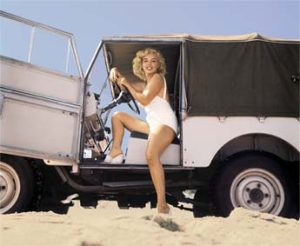 Demand for its unique capabilities soared, and derivatives of varying wheelbase and body style were added to further increase its flexibility and work capacity. Land Rover expanded the range of its products considerably in the 1960s, offering a forward control variant and increasing numbers of individually tailored versions for one-off or specialized purposes, including an extra-light Land Rover suitable for air-freighting into the scene of battle. The ultimate explorer, it could by now be found worldwide.
Demand for its unique capabilities soared, and derivatives of varying wheelbase and body style were added to further increase its flexibility and work capacity. Land Rover expanded the range of its products considerably in the 1960s, offering a forward control variant and increasing numbers of individually tailored versions for one-off or specialized purposes, including an extra-light Land Rover suitable for air-freighting into the scene of battle. The ultimate explorer, it could by now be found worldwide.
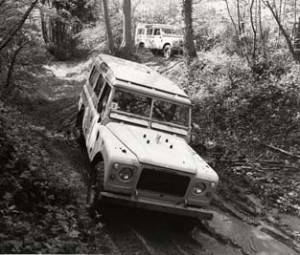 In 1966 – a year which also saw the half millionth Land Rover – among many other things, a survey showed that Land Rover held no less than a third of the world market for vehicles of the same type. Perhaps most interesting was the fact that two-thirds of Land Rovers were, by the mid-1960s, found to be used for recreational purposes or for general transport rather than the agricultural use which had been the original intent. This trend was most noticeable in the U.S., where the Land Rover found itself at the forefront of a
In 1966 – a year which also saw the half millionth Land Rover – among many other things, a survey showed that Land Rover held no less than a third of the world market for vehicles of the same type. Perhaps most interesting was the fact that two-thirds of Land Rovers were, by the mid-1960s, found to be used for recreational purposes or for general transport rather than the agricultural use which had been the original intent. This trend was most noticeable in the U.S., where the Land Rover found itself at the forefront of a 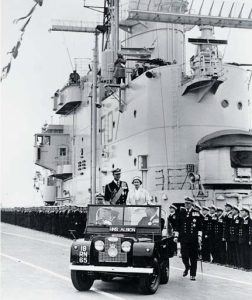 burgeoning market – the sport utility vehicle. The survey coincided neatly with a project called the 100-Inch Station Wagon which was developed under the direction of Spen King. His idea was to build something which combined the comfort, silence and road performance of Rover cars with the off-road capability of a Land Rover. This was a difficult challenge, but one with which the Land Rover engineering teams quickly came to grips. Early moves in the right direction came in 1966 and 1967, when a six-cylinder engine was offered in the Land Rover for the first time. More significant changes did not occur until 1972, when the Series III was introduced. This model featured a synchromesh transmission, improved instrumentation, a padded dash and basic emission control equipment. To the horror of
burgeoning market – the sport utility vehicle. The survey coincided neatly with a project called the 100-Inch Station Wagon which was developed under the direction of Spen King. His idea was to build something which combined the comfort, silence and road performance of Rover cars with the off-road capability of a Land Rover. This was a difficult challenge, but one with which the Land Rover engineering teams quickly came to grips. Early moves in the right direction came in 1966 and 1967, when a six-cylinder engine was offered in the Land Rover for the first time. More significant changes did not occur until 1972, when the Series III was introduced. This model featured a synchromesh transmission, improved instrumentation, a padded dash and basic emission control equipment. To the horror of 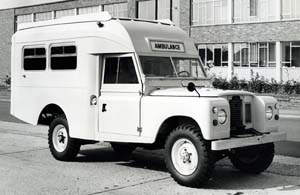 many owners, the grille was changed from steel mesh to plastic, which meant it could no longer be used as a campfire grille.
many owners, the grille was changed from steel mesh to plastic, which meant it could no longer be used as a campfire grille.
With the launch of the Discovery in 1989, this already legendary vehicle became known as the Land Rover Defender. In the current Defender, the undisputed heritage of the original 4×4 is now combined with innovative technology. Since 1990, the old standard had been known as the Land Rover Defender, with 90, 110 or 130 inch wheelbase, 2.5 turbodiesel engine (200TDi). In 1995 was introduced also 2.5 litre 300TDi. This engine has replaced for Td5 in 1998. Since 2007 Defenders are mounted with 2.4 litre common-rail engines based on Ford’s DuraTorq engines. 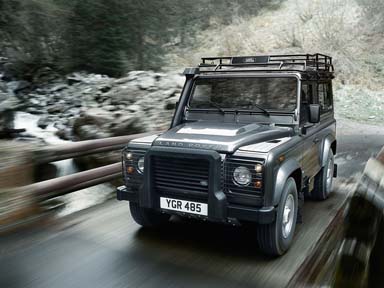 Following a major upgrade in 2007 which included a new facia, new 2.4 litre common-rail engine and six-speed manual transmission, the Defender’s specification has been further improved for 2012. A new EU5 2.2-litre diesel engine replaces the 2.4-litre diesel. The smaller capacity engine delivers the same power, torque and economy as its outgoing sister but makes this the cleanest Land Rover Defender yet produced.
Following a major upgrade in 2007 which included a new facia, new 2.4 litre common-rail engine and six-speed manual transmission, the Defender’s specification has been further improved for 2012. A new EU5 2.2-litre diesel engine replaces the 2.4-litre diesel. The smaller capacity engine delivers the same power, torque and economy as its outgoing sister but makes this the cleanest Land Rover Defender yet produced.
Related Posts :
Category: HISTORY










